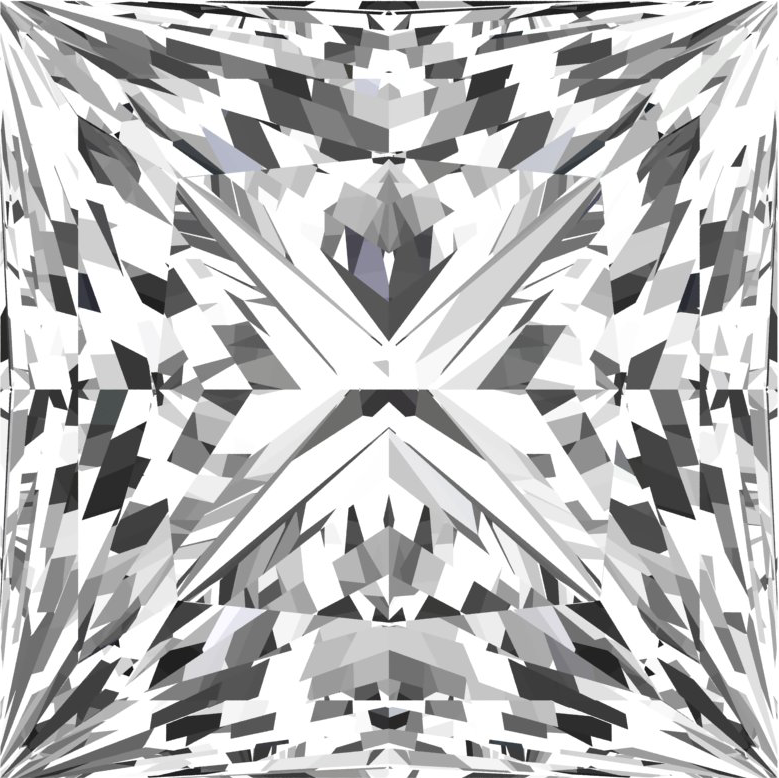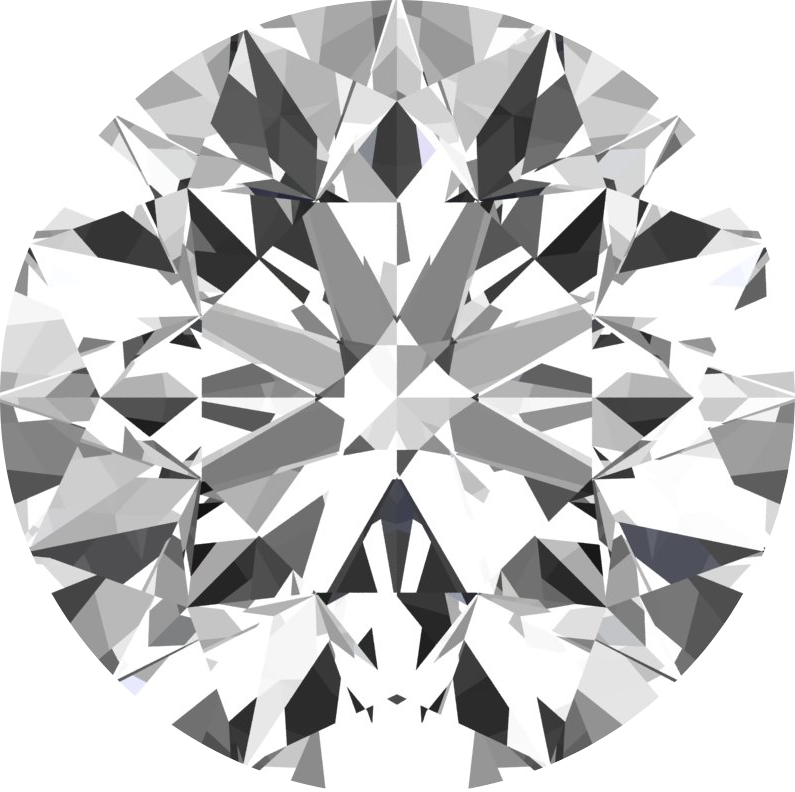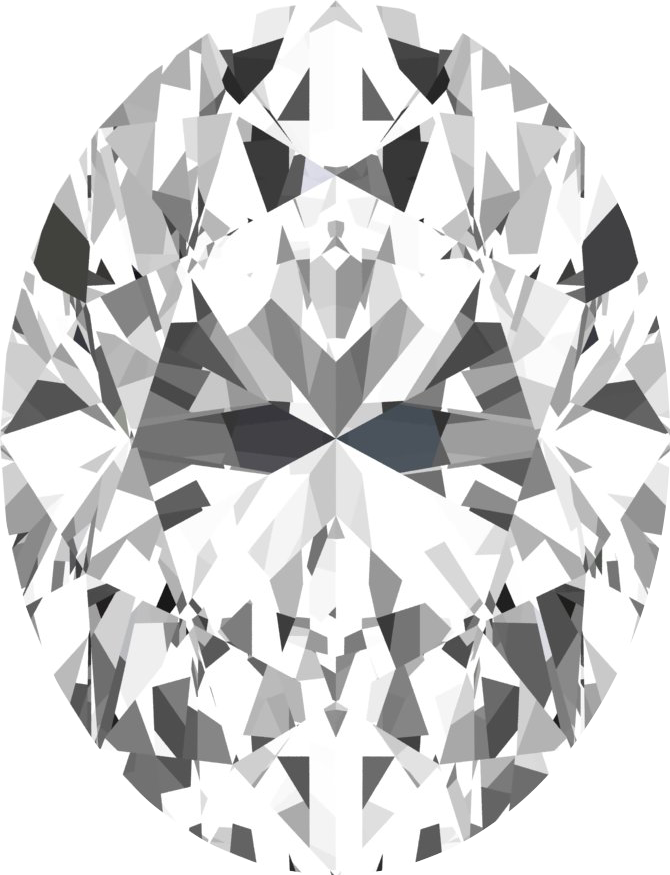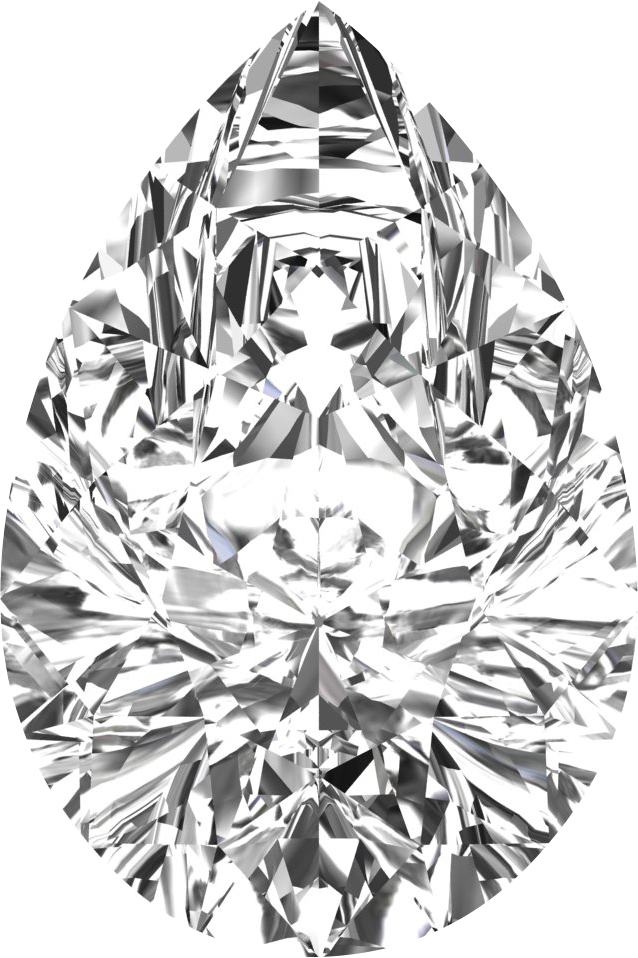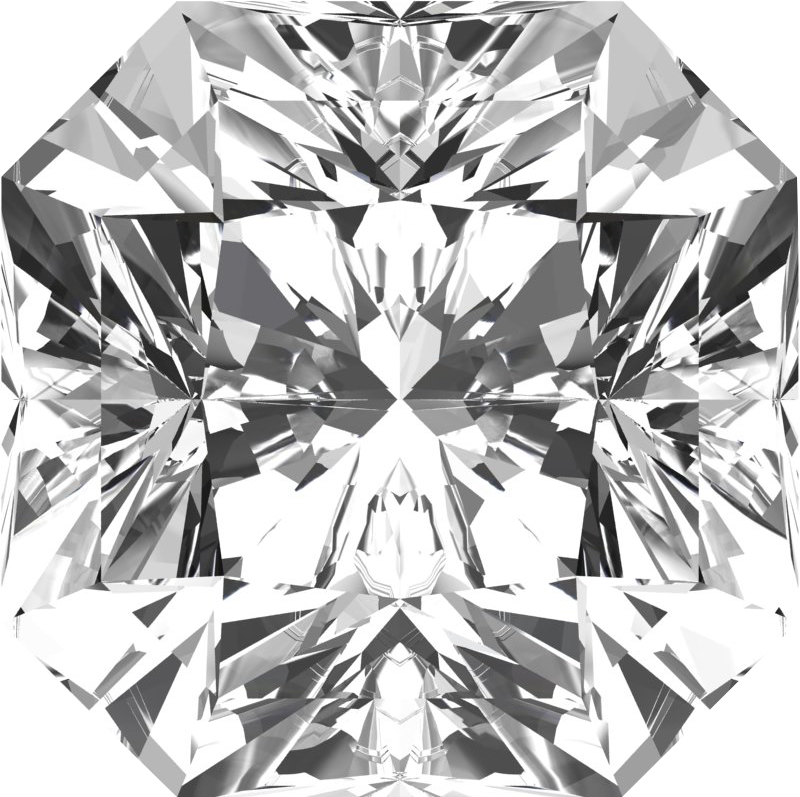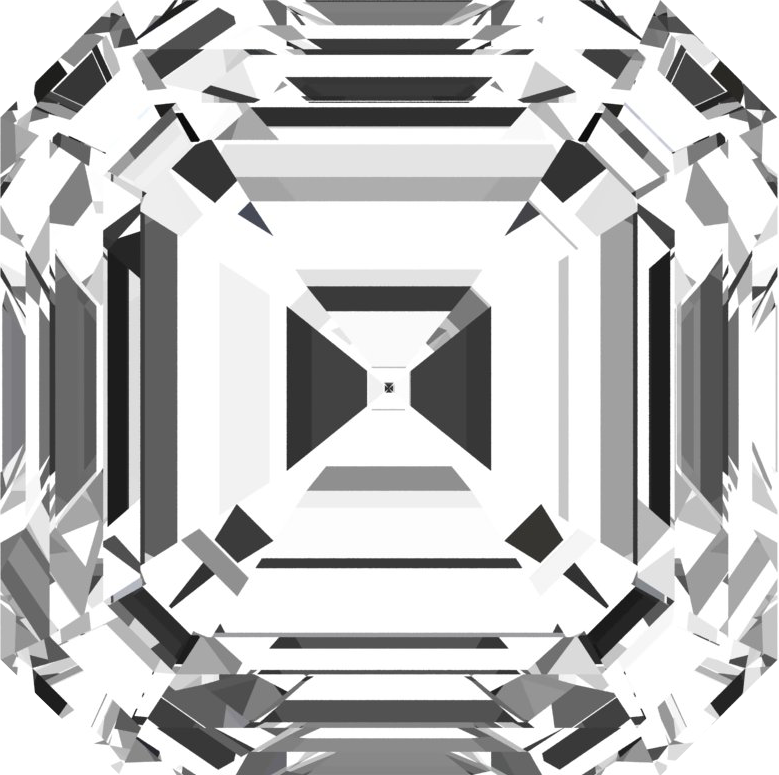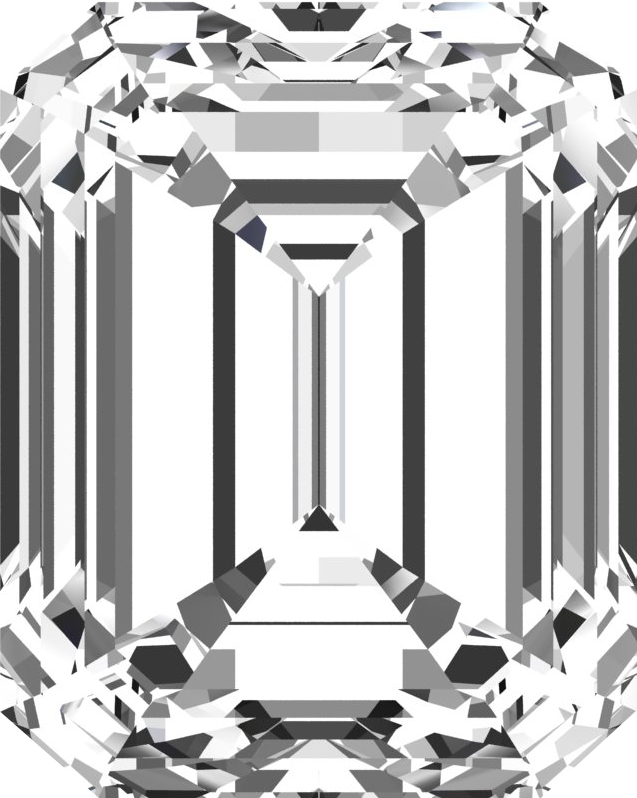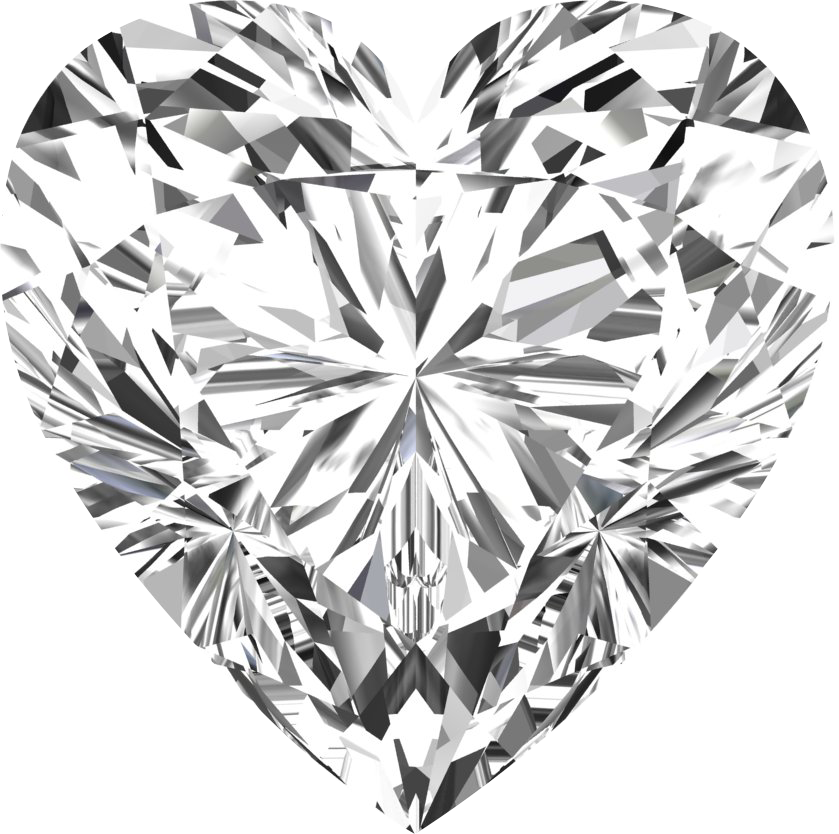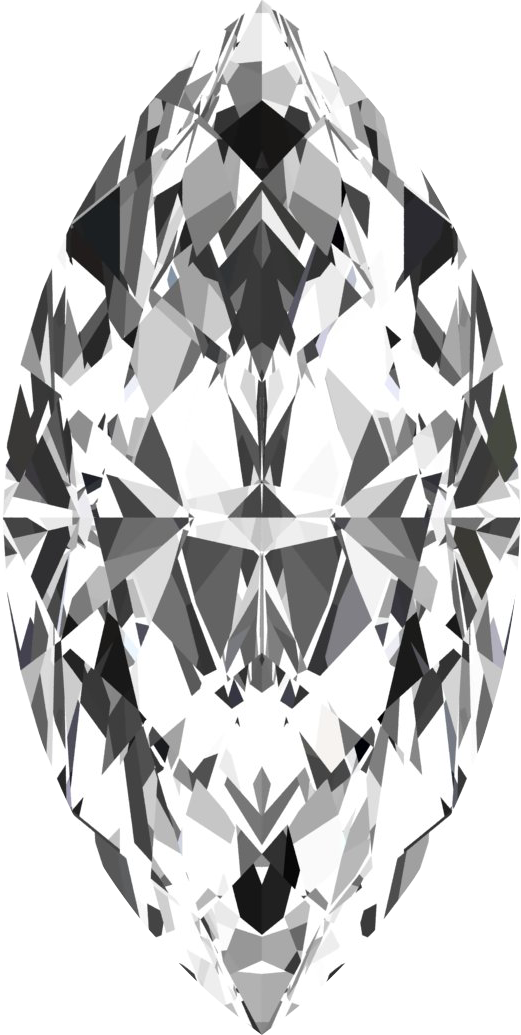-

-
Princess-cutMaximum brilliance in an exquisite square form
Also referred to as a square cut shape, the princess-cut diamond follows next to the round type in popularity given its special shape that contributes to its brilliance. Its sharp corners may tend to chip off and emphasize color, which will make you go for a higher grading in order to diminish the color presence.
To optimize this diamond shape, opt for 1.05 (rectangle) or 1.10 (square) LTWR.
-
Brilliant RoundA timeless shape that offers the most brilliance and lust
Brilliant Round diamonds is a classic and known to bring out fire and scintillation by achieving a balance in its other characteristics like cut and clarity. It becomes more evident, especially when used in an engagement ring. It may not have a big surface area, but it will likely have the most sparkle.
While a round-shaped diamond may be pricey, you can slightly scale down on the carats to get it at a low cost. As an example, buying a 0.9 carat round diamond will give you significant savings from a 1-carat type yet it will pretty much look the same in size.
-
OvalExcellent brilliant creation that takes form of the finger
When you want the appearance of having slender fingers yet with the elegance of a round-shaped diamond, an oval cut diamond-shaped ring is best for you. You should consider the LTWR anywhere from 1.25 to 1.75.
-
PearRaindrops of pure bliss and shine
Also known as the teardrop shape, a pear-shaped diamond with an LTWR from 1.5 to 2.0 will add more value to your bling and a bonus effect of having slim fingers to boot.
-
Radiant-cutOutline of an emerald sparkly like a round
A radiant-cut diamond shape is a popular choice that becomes even more attractive when it is against smaller diamonds. Its price will be dictated according to how rectangular they are with an ideal LTWR from 1.0 to 1.2.
-
Asscher-cutChef D’oeuvre in a square form
Similar to the emerald-cut shape, but more on the square side. The Asscher-cut diamond shape has rectangular facets, which have a slight disadvantage of showing color in its corners. To address this, you will have to go up on the color grading scale and have a LTWR from 1.0 to 1.05.
-
Cushion-cutA beautiful cross between a round and a princess
This pillow-like shape has a century-long history. The larger facets and round corners, however, may actually show the surface inclusions. In this regard, check the clarity plot if you buy one with a lower clarity rating. An LTWR of 1.0 will bring out the best of a square silhouette, while a maximum of 1.3 will highlight a rectangular cushion diamond.
-
Emerald-cutElegant and classy with long majestic facets
This shape has its own brand of sparkle due to its pavilion that gives off an effect similar to a room full of mirrors. As such, it reveals its clarity more than the other diamond shapes. You will probably get the most for your buck if you choose a high clarity rating of at least VS2. Furthermore, it is recommended for this shape to have a LTWR from 1.25 to 1.75.
-
HeartPurest symbol of shining love
Nothing says love better than this heart-shaped rock. But this can be an expensive affair because you will need a higher color grading for you to get the most out of this shape. Your LTWR should range from 0.75 to 1.25.
-
MarquiseLarge and narrow provides a larger surface appearance
This diamond shape may be a great choice for those who cannot spend on a higher carat weight. It's even more flattering when it is surrounded by diamonds. It has more LTWR allowances from 1.5 to 2.5.
-


Different Diamond Shapes And Their Impact on Value
Diamonds have always been synonymous to luxury and opulence. And one of the things to consider when buying them is their shape. After all, the diamond shape can tell something about the character of the person wearing it. Hence, it matters that it fits your style and personality, even your budget.
The shape of a diamond is its outer boundary that has various geometric attributes. Often, it is how the figure appears to the observer. For instance, a heart-shaped diamond is exactly that with its face up, which is sought after among the ladies. But the shape of a diamond stone can influence its important elements which can drive up its price, namely: cut, length-to-width ratio, color, and clarity.
Most Popular
Based on popularity, the round-shaped diamond is at the top. It is more expensive compared to the other shapes like emerald or pear that cost significantly less. At the end of the day, your taste and preference will dictate which diamond shape you will choose for yourself or your loved one. Keep that sparkle!
Diamond Length-To-Width Ratio (LTWR)
The length-to-width ratio of a diamond presents symmetry relative to its shape. This is very important in achieving that diamond sparkle and beauty that you will demand from your precious piece. With the right proportions, your diamond will reflect more light to create that “blingy” luster.
You can arrive at your LTWR by dividing the diamond length by its width. For instance, a diamond that measures 6mm in length and 4mm in width will have a length-to-width ratio of 1.5.
Diamond color
- Color gradings run from D-Z for white diamonds.
- The closer the color grade is to “D” the whiter the stone will be.
- The average shopper purchases in the near colorless category G-I
- Consumers looking to save money and still have a nice stone typically purchase I-J color diamonds.
- Customers with a higher budget typically shop in the Colorless category. D-F
Diamonds with a color grading “J” or higher are not recommended for white gold or platinum settings.
These diamonds tend to look best in yellow or rose gold settings which help mask the color of the stone.
Strong and bright colors may be valued in most commodities, but in the case of diamonds, the whiter it is, the better. In fact, diamonds devoid of color which have that icy appearance are considered the holy grail and therefore, it will break the bank. They are D-graded on the color grading scale, reflecting the most light for that blinding sparkle.
The more accessible diamonds can almost achieve the colorless sparkle of the elusive D diamonds. These would be categorized from G to J diamonds. As such, the progression of the letter grading will also mean the higher color presence in the diamond and its affordability. Common diamonds will have yellowish undertones which, although not ideal, can still look nice and can complement a gold setting. Interestingly, there are diamond shapes that can mute such hues but still look great.
Diamond clarity
- Clarity grading of diamonds tells you how clear the diamond is.
- Most diamonds have inclusions. The fewer inclusions a diamond has the more valuable it is.
- The average consumer purchases in the SI1-SI2 clarity range to be budget-friendly and have a nice quality diamond.
If you don’t want to be able to see any imperfections to the naked eye (looking at the diamond without magnification) ensure to write in the describe section that the diamond needs to be eye-clean.
Clarity is another crucial factor in dictating the value of a diamond. It may have a high carat weight, but with the presence of blemishes and internal cracks, it can decrease in price. In most cases though, such imperfections remain invisible to the less discerning eye and are naturally-occurring. This is why gemologists prefer to call them internal characteristics as the beauty of a diamond is hardly affected by them. After all, they add character and uniqueness to the stone.
Nonetheless, diamonds with perfect clarity are still most ideal and extravagant at that. A diamond’s shape impacts its clarity because it can emphasize or downplay its surface flaws.
Diamond cut
- The diamond cut is one of the most important of the four Cʼs. You can have a very high-quality diamond
but if it has a poor cut then it will lack the brilliance you expect in a diamond. - The average consumer purchases Very Good Cut
- Consumers with a larger budget typically shop between Very Good Cut – Ideal Cut
- Consumers with a low budget typically shop Fair Cut – Good Cut
- Very few consumers shop for Poor Cut
The cut of a diamond is often mistaken as its shape. While they usually go hand in hand, they are actually two different things. The shape is the outline of the diamond while the cut is influenced by facets, dimensions, symmetry, among others. A diamond’s cut can accentuate its shape more by maximizing brilliance and sparkle.
You may have two round-shaped diamond rings, but differ in cut, with one having deeper facets than the other. The finer cut will be more sparkly, which will command a higher price than the one with a shallow cut.
Diamond Carat
The average person shops for a 1ct diamond for an engagement ring. The larger the diamond the more the cost will be. Ask for diamonds just under a full carat weight can save you money.
Example: instead of a 2ct diamond ask for a 1.9ct diamond. The size will look the same to most people but can possibly save you hundreds of dollars.
- Shoppers with a lower budget for diamonds typically purchase .75ct or less.
- The person with an average budget normally selects a .75ct diamond to 1.25ct diamond.
- People with a greater budget often proceed with a 1.25ct or greater diamond.
